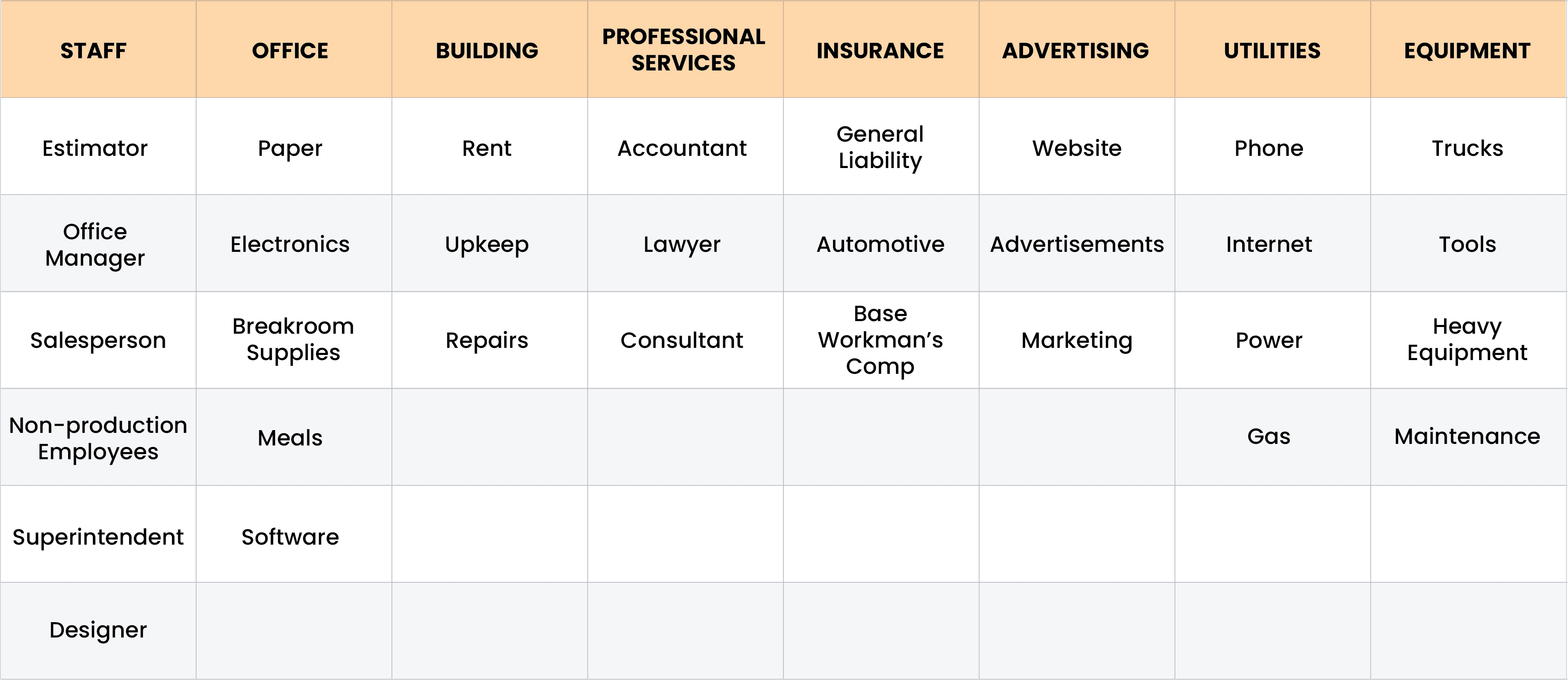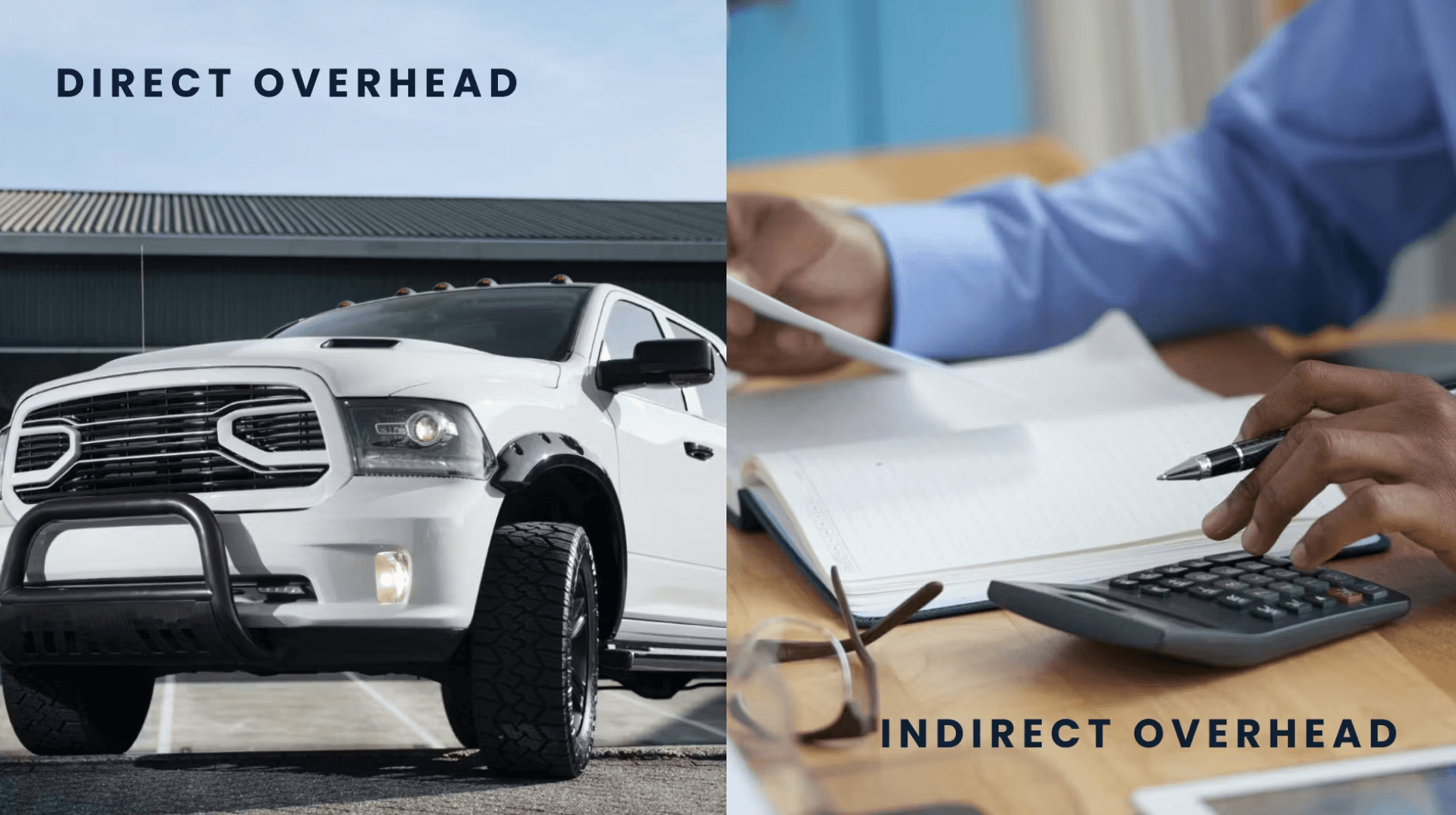A Contractor’s Guide to Understanding Overhead and Markup
Understanding overhead is critical to managing the financial health of a construction business and ensuring its long-term success.
In this guide, we will provide a comprehensive overview of overhead expenses, help you determine what your actual overhead is, and explore what markups you can add to projects to ensure you pay for your overhead and reach a profit.
What is Overhead?
Overhead, put simply, is the cost of doing business. If you had no clients for a month, what expenses would still come out of your bank account? We’ve created a list of common overhead expenses to give you a better idea:
Common Overhead Expenses

Finding Your Overhead
Make a list of items and expenses that make up part of your monthly or annual expenses.
Need help? Take a look at our list of possible overhead expenses to get an idea of what you may be paying for.
Connect each overhead item with a tangible cost.
Rough estimates are okay! Take the first step to understanding the “why” behind your businesses’ financials.
Compare your overhead expenses with what you anticipate making during a specific month or a year.
We recommend finding your average monthly overhead expenses. This will help you set markers for every project, so you can always know your financial trajectory.
Once you know your expected income and expected overhead, you can determine how much of your cash goes straight to making your business run.
If your business expects to bring in $10,000 in any given month, but $1,000 goes directly towards the company truck payment, phone bill, gas, and tools, then 10% of the business income goes straight toward your overhead expenses.
Adding Markup to Cover Overhead Expenses
Once you know how much of your annual or monthly expenses go towards your overhead, you’ll want to create a markup to cover that cost. Markup can be applied to labor, materials, or the project as a whole.
For the above example, a 10% overhead percentage would then be converted into a 10% markup percentage. This way, your overhead is covered through the markups applied to every project completed in that month.
Why Add Markup?
Many contractors don’t calculate for markup or use specific profit margins. They end up paying their operating costs and any mistakes out of their profit. Once your money gets in the bank, keep it there by charging a markup upfront. Don’t just buy your job, own your business.






